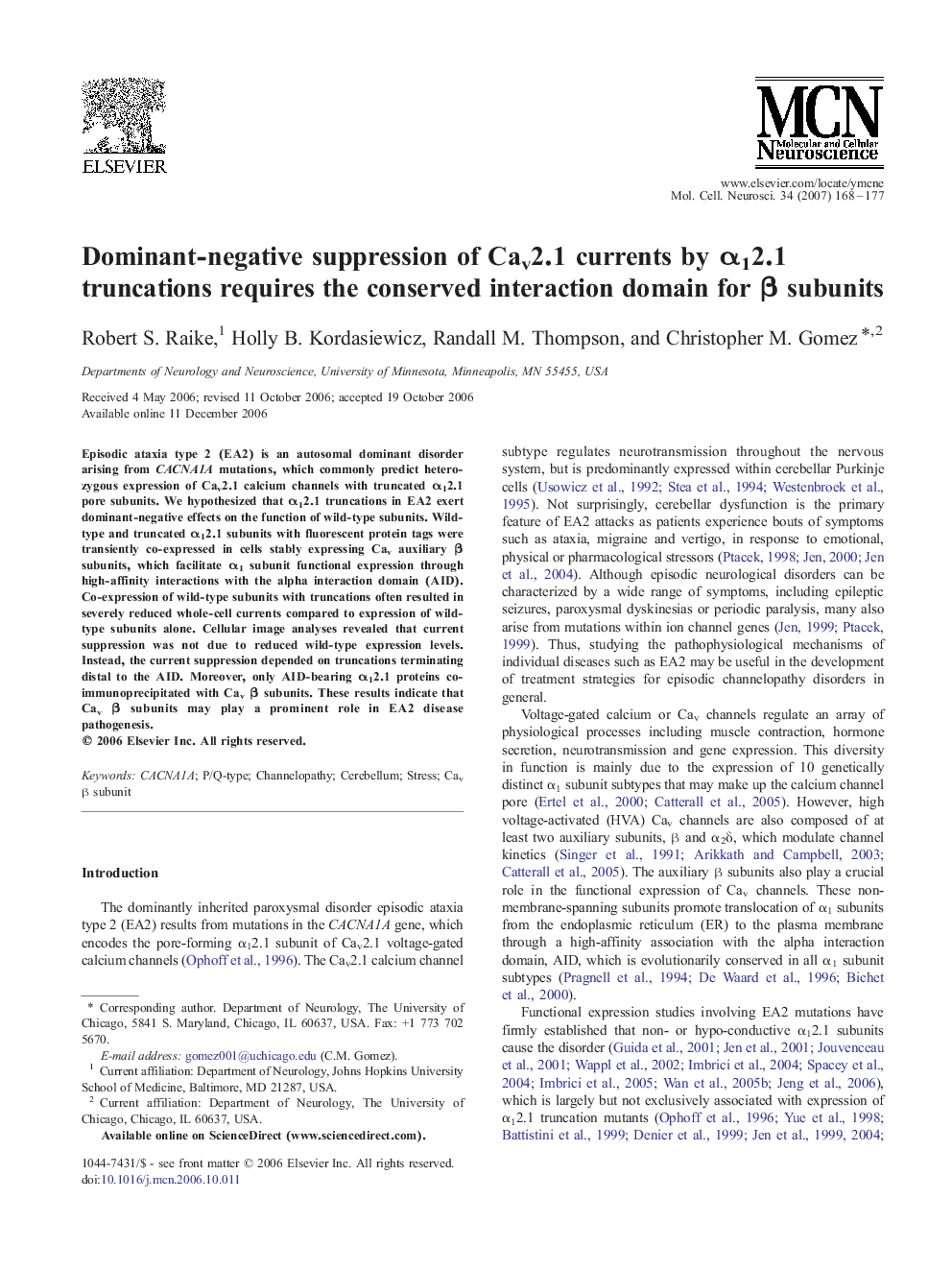| Article ID | Journal | Published Year | Pages | File Type |
|---|---|---|---|---|
| 2199306 | Molecular and Cellular Neuroscience | 2007 | 10 Pages |
Episodic ataxia type 2 (EA2) is an autosomal dominant disorder arising from CACNA1A mutations, which commonly predict heterozygous expression of Cav2.1 calcium channels with truncated α12.1 pore subunits. We hypothesized that α12.1 truncations in EA2 exert dominant-negative effects on the function of wild-type subunits. Wild-type and truncated α12.1 subunits with fluorescent protein tags were transiently co-expressed in cells stably expressing Cav auxiliary β subunits, which facilitate α1 subunit functional expression through high-affinity interactions with the alpha interaction domain (AID). Co-expression of wild-type subunits with truncations often resulted in severely reduced whole-cell currents compared to expression of wild-type subunits alone. Cellular image analyses revealed that current suppression was not due to reduced wild-type expression levels. Instead, the current suppression depended on truncations terminating distal to the AID. Moreover, only AID-bearing α12.1 proteins co-immunoprecipitated with Cav β subunits. These results indicate that Cav β subunits may play a prominent role in EA2 disease pathogenesis.
